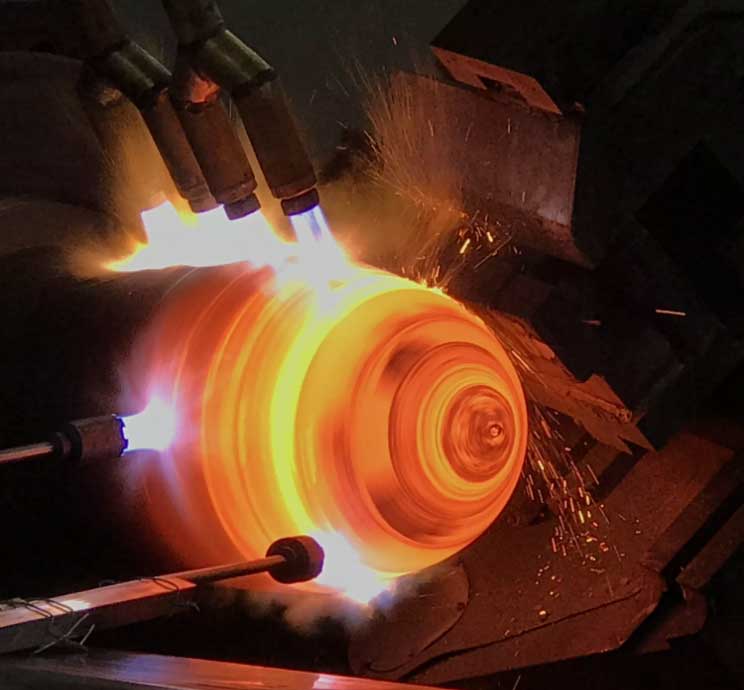What do you know about the high pressure cylinder spinning machine?

High-pressure cylinder spinning machines and roller spinning are two different techniques used in metalworking processes, particularly for shaping and forming high-pressure cylinders. While both methods are effective, they employ distinct approaches to achieve their respective results. Let’s explore the characteristics and differences between these two processes.
High-Pressure Cylinder Spinning Machine:
The high-pressure cylinder spinning machine is a specialized piece of equipment used to shape cylindrical metal components, such as gas cylinders, through a spinning process. It involves clamping the workpiece onto a spinning mandrel and applying pressure to shape the metal against the mandrel’s surface.
The spinning process begins by rotating the mandrel and the workpiece simultaneously. As the spinning progresses, a series of spinning rollers, also known as pressure or sizing rollers, apply pressure to the outer surface of the workpiece. This pressure causes the metal to deform and gradually take on the desired cylindrical shape.
Advantage of hot spinning machine:
High-pressure cylinder spinning machines offer several advantages. They provide precise control over the shaping process, resulting in uniform and accurate dimensions for the cylinders. This method can accommodate various thicknesses and materials, allowing for versatility in production. Additionally, high-pressure cylinder spinning machines are capable of producing cylinders with excellent surface finishes.
Introduction of Roller type Spinning:
Roller spinning, on the other hand, is a metalworking process used to shape cylindrical components by applying pressure through a set of rollers. Unlike high-pressure cylinder spinning, roller spinning does not involve a spinning mandrel. Instead, the workpiece is held in place while the rollers apply pressure and deform the metal to form the desired shape.
In roller spinning, the workpiece is placed between two or more rollers. These rollers exert pressure on the metal, causing it to flow and conform to the shape of the rollers. The rollers can have different profiles to achieve specific shaping requirements.
Roller spinning is often preferred for larger cylindrical components or those with thicker walls. It is a versatile process that can be used for a wide range of materials, including aluminum, steel, and stainless steel. Roller spinning also offers excellent repeatability, making it suitable for high-volume production.
The main advantage of roller spinning is its efficiency in shaping large and heavy metal components. The process can be automated, allowing for faster production rates and reduced labor costs. Additionally, roller spinning provides consistent wall thickness throughout the entire cylindrical component.
In summary, high-pressure cylinder spinning machines and roller spinning are two distinct methods used in metalworking for shaping high-pressure cylinders. While high-pressure cylinder spinning involves a spinning mandrel and pressure rollers, roller spinning relies solely on a set of pressure-applying rollers. Each method offers its own advantages, and the choice between the two depends on factors such as the size of the component, desired tolerances, and production volume.
